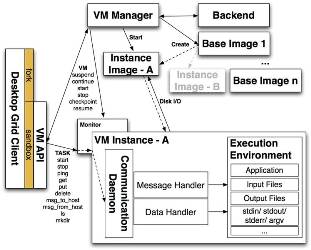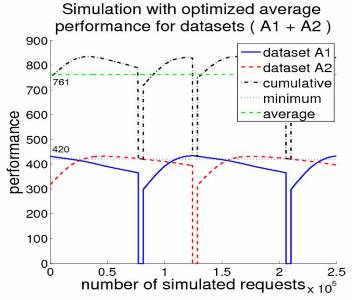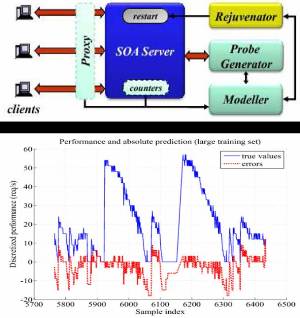|
Latest Research Highlights |
|
Using Virtual Machines in Desktop Grid Clients for Application Sandboxing
CoreGRID Technical Report TR-0140 [pdf]: Desktop Grids harvest the computing power of idle desktop computers whether these are volunteer or deployed at an institution. Allowing foreign applications to run on these resources requires the sender of the application to be trusted, but trust in goodwill is never enough. An efficient solution is to provide a secure isolated execution environment, which does not constrain any additional burdens neither on administrators nor on users. Currently Desktop Grids do not provide such facility. In this report we describe our approach to provide a platform independent and transparent sandbox mechanism for Desktop Grids. We define the requirements for the transparency and present a prototype that fulfills these criteria. |  | Managing Performance of Aging Applications via Synchronized Replica Rejuvenation CoreGRID Technical Report TR-0143 [pdf]: We investigate the problem of ensuring and maximizing performance guarantees for applications suffering software aging. Our focus is the optimization of the minimum and average performance of such applications in virtualized and non-virtualized scenario. The key technique is to use a set of simultaneously active application replica and to optimize their rejuvenation schedules. We derive an analytical method for maximizing the minimum “any-time” performance for certain cases and propose a heuristic method for maximization of minimum and average performance for all others. To evaluate our method we perform extensive studies on two applications: aging profiles of Apache Axis 1.3 and the aging data of the TPC-W benchmark instrumented with a memory leak injector. The results show that our approach is a practical way to ensure uninterrupted availability and optimize performance for even strongly aging applications. | 
| Using Machine Learning for Non-Intrusive Modeling and Prediction of Software Aging
CoreGRID Technical Report TR-0142 [pdf]: The wide-spread phenomenon of software (running image) aging is known to cause performance degradation, transient failures or even crashes of applications. In this work we describe first a method for monitoring and modeling of performance degradation in SOA applications, particularly application servers. This method works for a large class of the aging processes caused by resource depletion (e.g. memory leaks). It can be deployed non-intrusively in a production environment, under arbitrary service request distributions. Based on this schema we investigate in the second part of the paper how machine learning (classification) algorithms can be used for proactive detection of performance degradation or sudden drops caused by aging. We leverage the predictive power of these algorithms with several techniques to make the measurement-based aging models more adaptive and more robust against transient failures. We evaluate several state-of-the-art classification methods for their accuracy and computational efficiency in this scenario. The studies are performed on a data set generated by a TPC-W benchmark instrumented with a memory leak injector. The results show that the probing method yields accurate aging models with low overhead and the machine learning approach gives statistically significant short-term predictions of degrading application performance. Both approaches can be used directly to fight aging via adaptive software rejuvenation (restart of the application), for operator alerting, or for short-term capacity planning. |  |
|
|
Last Updated ( Wednesday, 10 September 2008 )
|